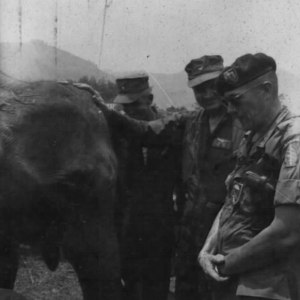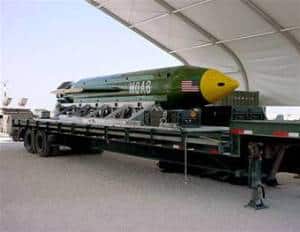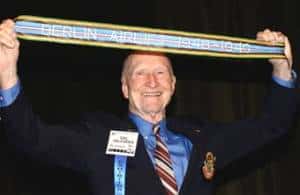
Military airdrop was originally developed during World War II to resupply troops on the ground who were otherwise isolated from friendly contact. Supplies typically included items such as ammunition, clothing, food, and other rations. Airdrop later developed into the delivery of cargo, larger supplies such as tanks, and weapons. The bombs dropped in Vietnam and recently Afghanistan, are also examples of how airdrop is used. There are also cases of airdrop missions involving the delivery of unconventional items. An example of this was during the Vietnam War when elephants were dropped by the U.S. Army. During that time there were certain Vietnamese villages that were seen as having strategic value due to their close proximity to enemy weapons supply routes. Elephants were needed by these villages as they were considered the primary source of farm labor. In order to ally themselves with these villages, the U.S. Army delivered elephants to express their gratitude. In 1995 the film Operation Dumbo Drop was released and based off the true events that occurred during the Vietnam War.
Another example of an unconventional airdrop mission was during a series of tests called the “Killer Hercules Demonstration Program.” This project involved the airdrop of a box that contained a running UAV (Unmanned Aerial Vehicle) from a C-130 aircraft. The UAV was to fly out of the box during descent, locate a target, and fire a missile. Check out the video below to see more of the “Killer Herc.”

Elephants weighing a whopping 7 or 8 tons are still lighter than the weight of the “Mother of All Bombs.” According to the U.S. Air Force, “The GBU-43/B Massive Ordnance Air Blast bomb is a 21,600 pound, GPS-guided munition with precision guidance and architecture to be delivered accurately to enemy forces with the main intention of permanently disabling them. The goal was to put pressure on then-Iraqi dictator Saddam Hussein to cease and desist or the United States would not only have the means but use them against the unpopular tyrant.”
The MOAB was produced in-house at the Air Force Research Laboratory Munitions Directorate and was considered unique for its “smart bomb” or satellite guided capabilities. A little known fact about the MOAB is why it is such a distinct green color. The Air Force states in the same article that during its production the team was in a rush to deliver the bomb to the war efforts and the only color available at the time was John Deere green. The MOAB is considered to be the most powerful bomb ever built even though it has never used in combat. It completed its job of deterring the enemy from its sheer presence.

Finally, one of the more unique airdrop missions revolved around Colonel Gail Halvorsen, or the “Candy Bomber.” Colonel Halvorsen was one of the many American pilots to fly the USAF C-54 Skymaster during the Berlin Airlift of 1948-49. The Colonel was nicknamed the “Candy Bomber” during the operation as he would regularly drop candy to the German children below. At one point he had engaged in a conversation with the young children who had asked if he had any candy or food to give to them. Colonel Halvorsen would then go on to promise the children he would drop them more candy on his next visit and to look for him to “wiggle his wings.”
Colonel Halvorsen soon became known to the children as “Uncle Wiggly Wings” and enlisted the help of fellow pilots who would donate their candy ration cards to support the continued candy efforts. When word of the “Candy Bomber” reached the United States, it wasn’t long before thousands of pounds of candy were delivered for the airdrops. Even children in East Berlin were able to receive the treats because according to Havlorsen, “kids are kids everywhere.”

